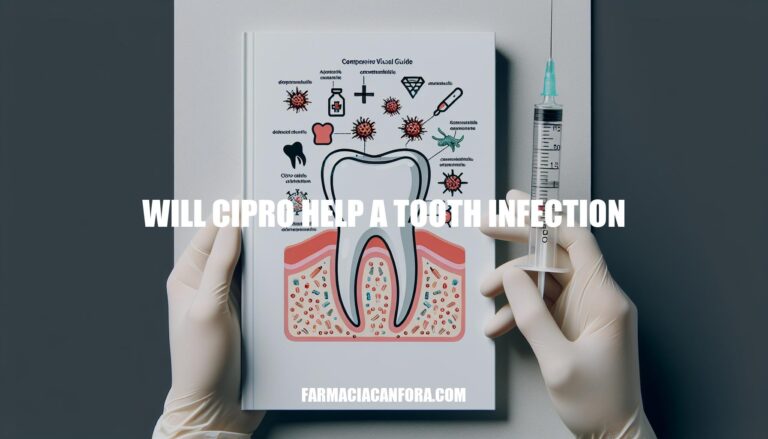


Ciprofloxacin, commonly known as Cipro, is a fluoroquinolone antibiotic used to treat various bacterial infections. It’s effective against a wide range of bacteria, making it a versatile option for conditions like urinary tract infections, respiratory infections, and skin infections. This introduction focuses on whether Cipro can be used to treat a tooth infection, a common concern for many patients.
Ciprofloxacin (Cipro) is a fluoroquinolone antibiotic that targets bacterial infections by inhibiting two key bacterial enzymes: DNA gyrase and topoisomerase IV. These enzymes are crucial for bacterial DNA replication, transcription, repair, and recombination. By inhibiting these enzymes, ciprofloxacin prevents the bacteria from replicating and repairing their DNA, leading to bacterial cell death.
In the case of a tooth infection, which is often caused by bacteria, ciprofloxacin can be effective by targeting the bacteria responsible for the infection. By inhibiting DNA gyrase and topoisomerase IV, ciprofloxacin disrupts the bacterial DNA processes, thereby killing the bacteria and helping to resolve the infection.
Ciprofloxacin (Cipro) is not typically the first choice for treating tooth infections. The most commonly recommended antibiotics for tooth infections are amoxicillin, penicillin, clindamycin, and azithromycin. These antibiotics are preferred because they are more effective against the bacteria commonly found in oral infections.
Studies and clinical evidence suggest that while ciprofloxacin can be used for dental infections, it is generally reserved for cases where first-line antibiotics are not suitable or effective. Ciprofloxacin is a broad-spectrum antibiotic, and its use in dental infections is less common due to its side effect profile and the availability of more targeted antibiotics.
For instance, a review by the American Dental Association (ADA) does not list ciprofloxacin among the primary antibiotics for tooth infections. Instead, it emphasizes the use of amoxicillin and penicillin as first-line treatments, with alternatives like clindamycin and azithromycin for those allergic to penicillin.
In summary, while ciprofloxacin can be used in certain situations, it is not the preferred antibiotic for treating tooth infections due to the availability of more effective and targeted options.
Healthcare providers might prescribe ciprofloxacin (Cipro) for a tooth infection in specific scenarios:
Conditions or symptoms warranting its use include:
Always follow the healthcare provider’s instructions for dosage and duration.
Potential Side Effects of Cipro (Ciprofloxacin):
Precautions:
Contraindications:
If you have any specific concerns or conditions, it’s best to consult your healthcare provider.
Here are some commonly prescribed antibiotics for tooth infections and a brief comparison to ciprofloxacin (Cipro):
Comparison to Ciprofloxacin (Cipro):
Ciprofloxacin, commonly known as Cipro, can be used to treat tooth infections but is not typically the first choice due to its side effect profile and availability of more targeted antibiotics.
It’s generally reserved for severe infections, allergies to common antibiotics, complicated infections, immunocompromised patients, or specific bacterial strains.
Potential side effects include nausea, diarrhea, dizziness, and tendon pain. Precautions include drinking plenty of water, avoiding certain medications, and using caution when driving.
Contraindications include a history of tendon disorders, myasthenia gravis, and known hypersensitivity to ciprofloxacin or other quinolones.
In comparison to other antibiotics like amoxicillin, penicillin, clindamycin, azithromycin, and cephalexin, Cipro is less commonly used for tooth infections but can be effective against a broad range of bacteria.